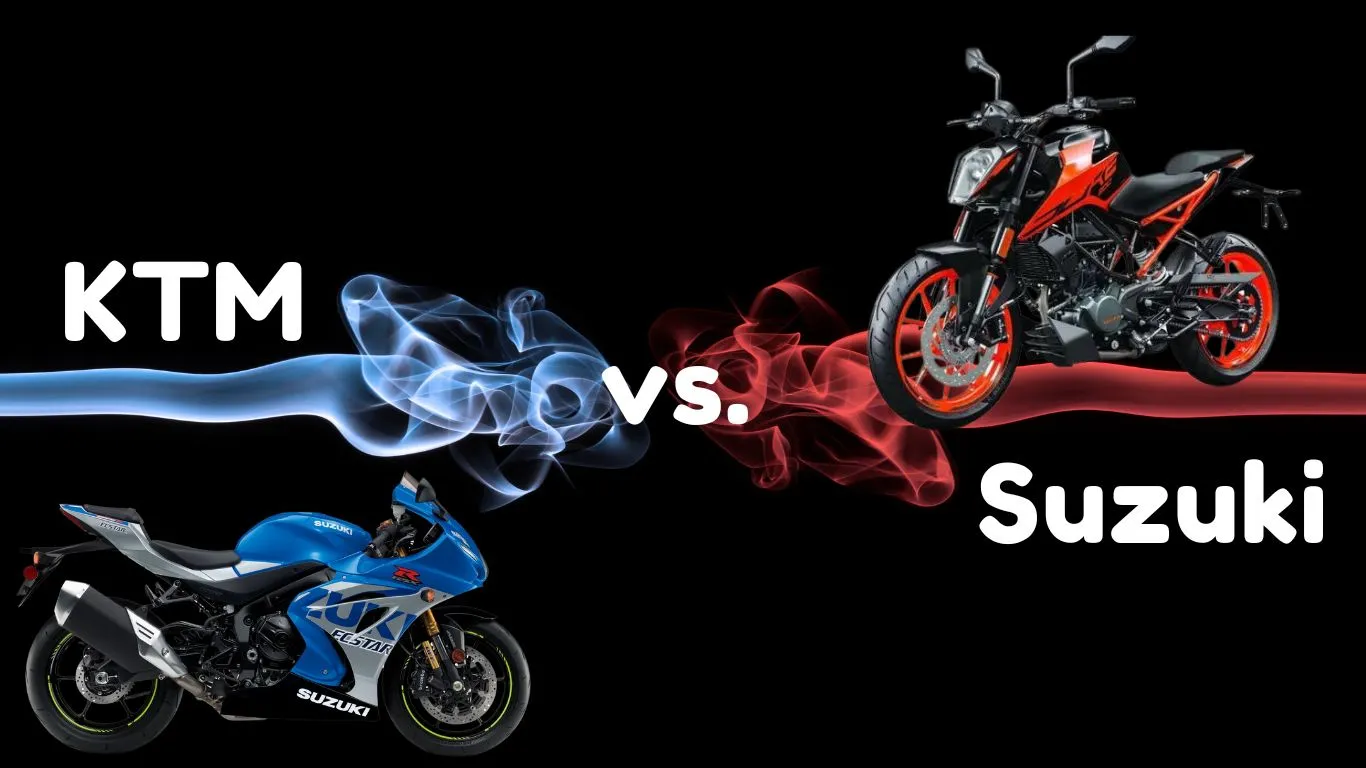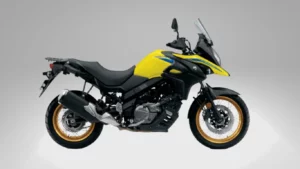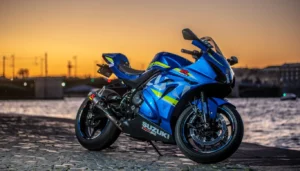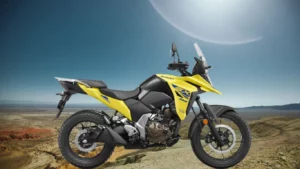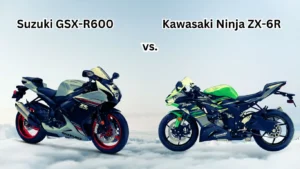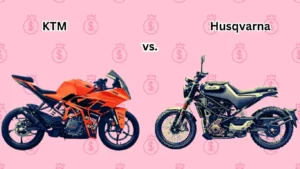Do you find yourself contemplating between KTM and Suzuki, two of the most acclaimed off-road motorcycle manufacturers? If that’s the case, then you’ve come to the right place! Our comparison will guide you through an in-depth exploration of these two motorbiking moguls, empowering you to make an informed decision.
In this comprehensive comparison, we examine everything from engine performance and reliability, to design and comfort, ensuring that you get a well-rounded perspective. Whether you’re an experienced rider or a novice in the off-roading world, we’re here to help you navigate this exhilarating terrain. Let’s throttle up and dive in!
Unveiling the Battle between KTM and Suzuki
Are you a die-hard fan of off-road biking and often find yourself tangled in the debate over which is better, KTM or Suzuki? Both of these leading manufacturers have carved out a niche in the offroad motorcycling scene with their unique offerings. However, individual demands and preferences might lead to one edging out the other in the race. In this heated contest of horsepower, design, performance, and features, let’s stride into the detail to learn what sets these riders apart.
Dishing out on Performance
KTM bikes are often lauded for exceptional power and acceleration. The company excels at providing lightweight versions of high-performance bikes, translating into enhanced speed and mobility. However, Suzuki manages to hold its ground with its high-end engine technology, ensuring a butter-smooth ride and steady power output, providing comfort in long and difficult tracks.
Design and Build
The design philosophy of both these manufacturers is inherently different. KTM bikes boast a more aggressive and bold design language, emanating a racer’s aura. Moreover, the extensive use of high-quality components ensures superior durability. Conversely, Suzuki is known for a more understated, comfort-oriented design, catering to those who prioritize long rides over fast sprints. The solid build quality of Suzuki also guarantees resilience against strenuous off-road conditions.
Features and Innovations
KTM has been on the front lines of innovating the off-road biking scene. With features like the user-friendly traction control system and adjustable bike geometry, it provides an unparalleled off-road experience. Suzuki, too, packs a punch with advanced features like low-RPM assist and easy start system, reflecting its aim to enhance the user comfort in off-road scenarios.
Price and Affordability
Determining which brand takes the cake in this department is largely subjective, depending on individual budgets. While KTM is generally priced higher due to its performance-focused approach and the use of high-quality components, Suzuki offers a more affordable range of bikes without compromising significantly on either performance or features.
Read Also:
- KTM vs Yamaha: Which One Is Better (12 Key Differences)
- Honda vs KTM: 8 Most Important Differences Explained
History and Legacy: From Humble Beginnings to Off-Road Dominance
Setting the Stage: KTM vs Suzuki
In the realm of off-road motorcycling, two brands stand out—KTM and Suzuki. Both have etched a strong reputation for themselves. However, each has unique offerings, features, and styles that make them distinctly different from each other. So, here you are, poised to find out which of these robust competitors offers the best bang for your buck.
Getting Into the Grit of Performance
Performance—It’s the heart and soul of any motorcycle, especially for off-roading. Undeniably, both KTM and Suzuki have shown commendable performance dynamics. KTM leans more towards speed with lighter weight and higher horsepower, whereas Suzuki exhibits exceptional control with power-packed engines, providing consistent power output and impressive handling.
The Nuts and Bolts of Design and Construction
Design and construction are not just about aesthetics—they also play a significant role in a machine’s performance. KTM motorcycles typically sport a vibrant, race-inspired design. Their bikes are typically lighter thanks to high-quality materials and minimalist design practices. Suzuki, on the other hand, focuses more on durability and practicality, utilizing heavier, robust materials for their builds. Their designs are less extravagant but highly reliable.
Bells and Whistles: Features and Innovations
While both brands have a plethora of features to offer, some intelligently designed functionalities grab the spotlight. KTM leads the pack in progressive tech innovation, incorporating features like adjustable powerband, WP suspension, and Brembo brakes. However, Suzuki isn’t far behind. Keeping rider comfort and control at its core, the brand offers features like the adjustable Showa suspension, Twin-Spar aluminum frame, and Suzuki’s Advanced Exhaust System (S-AES).
Striking a Balance: Price and Affordability
Cost can often be the tipping point in the decision between KTM and Suzuki. While KTM bikes are a bit pricier, they justify their cost with lightweight design, high tech features, and outstanding performance. On the flip side, Suzuki offers quality performance and reliability at a more budget-friendly price point, making it a great choice for riders looking for value-for-money.
Design and Engineering: Pushing the Boundaries of Performance
In the high-octane world of off-road motorcycles, design and engineering drive the competition. Both KTM and Suzuki consistently push the envelope to create machines that deliver optimum performance in even the most challenging terrains. Let’s delve into how these legendary manufacturers are spearheading advances in motorcycle design and engineering.
Power-Train Engineering: The Heart of Performance
The power-train engineering of a motorcycle can make or break its performance. In this area, both KTM and Suzuki excel. KTM, known for its two-stroke engines, consistently pushes for higher power-to-weight ratio, delivering a punchy ride. Suzuki, on the other hand, is celebrated for the durability and reliability of its four-stroke engines. Both manufacturers ensure that their power-trains are robust, yet efficient to give riders maximum torque and acceleration on volatile off-road conditions.
Aerodynamics: Designing for Speed and Stability
The aerodynamic design of a motorcycle is pivotal to its performance. The design principle at KTM is centered around minimizing drag and maximizing stability and control. The Suzuki approach tends to focus on producing sleek, aerodynamic designs that reliably deliver speed and agility. Both KTM and Suzuki motorcycles are meticulously crafted, integrating function with form to ensure that riders experience remarkable speed without compromising on stability or control.
Framing: The Skeleton That Holds It All Together
A motorcycle’s frame is its backbone. KTM often employs a lightweight, high-strength, chromoly steel frame, offering perfect flexibility and stability. Meanwhile, Suzuki has adopted a twin-spar aluminum frame that is lightweight yet rigid. It ensures superior handling and durability. Both brands focus on designing frames that translate into a superior ride quality, handling, and resilience on rugged trails.
Innovation: Advancing Through Technology
The world of motorcycle design and engineering is continually evolving, thanks to technological advancements. KTM is known to invest heavily in research and development, offering cutting-edge technologies such as adjustable power modes, traction control, and a quick-shifter. Suzuki doesn’t lag either, priding itself on its unique Suzuki Intelligent Ride System (S.I.R.S) that allows riders to customize their riding style. Both manufacturers are dedicated to delivering innovative solutions to improve rider experience and vehicle performance.
Off-Road Models: A Closer Look at KTM’s and Suzuki’s Lineup
When you set your heart on the adrenaline rush that off-road biking offers, your ‘best ride’ checklist might include a blend of performance, durability, and technology. The exciting lineup of off-road bikes from KTM and Suzuki provides all this and then some.
KTM’s Off-Road Lineup: Power Meets Performance
From the lightweight and agile KTM 125 XC to the more serious and powerful KTM 450 SX-F, KTM’s off-road lineup is a haven for seasoned riders and beginners alike. These bikes boast advanced suspension systems and powertrain technology that speaks volumes about KTM’s engineering prowess. In addition, the versatility of KTM’s off-road models makes the brand a tough competitor in the market.
Their two-stroke bikes come with a revolutionary TPI (Transfer Port Injection) engine, setting the bar high for fuel efficiency. Furthermore, the larger four-stroke models are celebrated for their power and performance in extreme conditions, which is a testament to KTM’s attention to creating resilient and robust machines.
Suzuki’s Off-Road Lineup: Emphasis on Versatility and Adventure
Suzuki’s range of off-road bikes, varying from the sprightly DR-Z125 to the powerhouse RM-Z450, is built to cater to every rider’s adventure spirit. Suzuki excellence shines through their thoughtful design targeting comfort, easy maneuverability, and fantastic throttle response. The broad lineup allows riders to choose a model that best fits their adventure – be it a high-speed competition or a leisurely trail ride.
The Suzuki RM series, particularly, stands out in the motocross space for their superior race-inspired engine and suspension design. The all-rounder DR-Z series, on the other hand, are known for their comfort, dependability, and versatility, making Suzuki an alluring choice for different off-road scenarios.
Power and Performance: Unleashing the Beast on the Dirt
When it comes to off-road biking, power and performance are fundamental. These features are what differentiate a motocross champion from the pack, while making every ride an exhilarating and adventure-filled experience. Now, let’s dive into how KTM and Suzuki meet these demanding requirements in the off-road scene.
Torque and Throttle: The Game Changers
KTM turns every head in the arena with its robust engines that deliver raw power on demand. The company flagship, the KTM 450SX-F, comes with a compact SOHC engine that churns out an impressive torque, serving you extreme power at your fingertips. It’s the force that pushes you forward, literally, and makes every off-road challenge feels like a breeze.
Suzuki, on the other hand, is anything but a pushover. Their savvy DR-Z400 series boast a tractable powerband that facilitates smooth and controlled acceleration. What Suzuki trades in raw power, they make up for with superior engine refinement and a user-friendly experience, creating a no-stress environment for the rider even in daunting terrain.
The Need for Speed: Measurements that Matter
KTM doesn’t just focus on torque. They push the envelope in speed, too. Their off-road machines, like the KTM 250SX, blend the perfect proportion of power-to-weight ratio delivering awesome top-speed abilities while maintaining superior control. It’s the recipe for the adrenaline-filled rides that motocross dreams are made of.
Suzuki plays a strong game in speed as well. Their RM-Z450 is credited with having one of the slicker transmission systems in the motocross world, aided by its suave five-speed sequential gearbox. Instant gear changes translate into quicker acceleration, thus giving it high-speed maneuvering capabilities to challenge even the very best in the business.
Technology and Innovation: The Race for Cutting-Edge Advancements
On the forefront of attracting off-road enthusiasts, both KTM and Suzuki are heavily invested in adopting the latest technology and innovations. Govening the off-road space, they have continually evolved with both, harnessing technological advancements to create bikes that not only run faster and smoother but are also more reliable and efficient on the dirt.
Advancing with Electronics
KTM and Suzuki have largely embraced the digital revolution in their off-road models. KTM’s advanced Ride-By-Wire system ensures optimal throttle response, while its Motorcycle Stability Control (MSC) enhances the bike’s stability during both acceleration and deceleration. Counter to this, Suzuki’s focus lies in balancing user-friendliness with advanced features. Their one-of-a-kind Suzuki Advanced Immobilizer System (SAIS) and Engine Control Module (ECM) help riders with better, safer control over their motorcycles.
Moreover, these manufacturers don’t shy away from embracing new electric technologies. KTM’s E-Ride series and Suzuki’s eco-friendly e-mobility project strongly reaffirm this, hinting at a promising future where off-road bikers can enjoy the thrills of their sport without compromising the environment.
Raising the Bar with Advanced Materials
As we delve deeper, it’s evident that the race isn’t contained to solely electronic advancements. Both KTM and Suzuki are at the forefront of utilizing cutting-edge materials in their manufacturing process. KTM’s commitment to “ready to race” philosophy is evident with their high-energy absorption plastic for increased safety, or their lightweight, high-strength polymer composite subframes designed for maximum handling agility and stability.
Suzuki, on the other hand, makes extensive use of aluminum in their frames, which offer excellent strength-to-weight ratio, enhancing the overall performance of their bikes. Additionally, Suzuki’s extensive use of durable, heat and scratch-resistant materials in their engine construction, which reduces the need for frequent maintenance and prolongs the lifespan of their bikes, truly sets them apart.
Rider Experience: The Thrill of Taming the Wilderness
When you’re navigating off-road terrains, the thrill truly comes from the rider’s experience. Both KTM and Suzuki have worked tirelessly to provide riders with an unforgettable adventure that makes them feel both exhilarated and in complete control. But how exactly do they achieve this remarkable feat, and what differentiates the experiences they offer?
The Feeling of Power: Commanding the Wilderness with KTM and Suzuki
One fundamental aspect of the off-road riding experience is feeling a sense of power and control over the bike. With KTM, you’ll sense an immediate surge of power the moment you kick into gear, thanks to their bikes’ aggressive power delivery and precise throttle response. Suzuki, on the other hand, places a stronger emphasis on smooth power delivery, making it easy for beginners and less experienced riders to handle their bikes.
Despite these contrasting approaches, both manufacturers understand the value of control. While KTM encourages the wild side of riders with its raw power, it ensures they have the tools to rein it in when necessary. Similarly, Suzuki, despite its reputation for smoothness, ensures riders have enough grunt to tackle any challenging terrain with confidence.
Comfort and Handling: A Rider’s Intimate Connection with their Machine
When it comes to comfort and handling, both KTM and Suzuki have their unique interpretations. KTM leans towards aggressive riding styles. They achieve this with firm seat material that allows for easier movement and robust, adjustable suspensions for tackling rough terrains. Suzuki, conversely, puts a lot of concern into the comfort of their riders. They opt for softer, plush seats and suspension setups that are more forgiving, providing a smooth, comfortable ride, especially during extended off-road adventures.
However, each manufacturer’s commitment to handling is unwavering. KTM ensures the delivery of agile, responsive bikes that encourage an attacking riding style with their compact frames and acute steering. Suzuki, meanwhile, ensures a steady, stable ride with a focus on intuitive steering that responds to the slightest rider movement.
Ergonomics and Comfort: Finding the Perfect Fit
When venturing off-road, comfort is more than a luxury; it’s an essential factor that aids performance and endurance. It’s here where the battle of ergonomics between KTM and Suzuki truly heats up. Both manufacturers aim to ensure their machines not only deliver speed and power, but also provide the perfect fit for a diverse range of riders, blending hard-hitting capabilities with user-friendly design.
Molding to the Rider: Ergonomic Innovation
KTM’s lineup, known for its meticulously researched designs, center around making their motorcycles feel like a natural extension of the rider. With adjustable footpegs, seat heights, and handlebar positions, KTM enables a tailored fit, ensuring both control and comfort.
Suzuki’s approach, on the other hand, leans more towards a universally comfortable design. Ideal for a wider range of body types and riding styles, Suzuki’s machines provide inviting ergonomics without compromising on performance.
The Comfort Factor: Suspension and Seating
KTM employs high-grade suspension systems designed to ably handle rough terrains while reducing rider fatigue. Additionally, KTM uses slim yet supportive seats designed for both control and comfort during long rides.
Suzuki, true to its versatility-focused philosophy, uses carefully calibrated suspensions tailored for a balanced ride, irrespective of the surface. The comfortable, well-padded seat complements this balanced approach, making Suzuki a great option for extended adventures.
Maintenance and Durability: Built to Last Through the Roughest Terrains
When it comes to off-road motorcycles, durability and ease of maintenance are vital. Suzuki and KTM have both managed to carve a niche for themselves by providing not just powerful and exciting machines, but also motorcycles that offer longevity and are easy to maintain. Let’s delve into how these two titans fare on these fronts.
Durability: KTM vs Suzuki
KTM is known for their rugged build and resilience. These motorcycles are designed to tackle the toughest terrains and hold up under pressure. Suzuki, on the other hand, shines in the area of component longevity. Their bikes’ parts tend to last longer, contributing to an overall durable machine.
Maintenance: A Constant Task
Off-roading puts motorcycles through intense wear and tear, making maintenance an ongoing task for both KTM and Suzuki owners. These manufacturers pay special attention to designing their bikes in a way that makes routine checks and part replacements simple and easy to carry out.
Cost of Ownership: Investment Beyond Purchase
When considering the cost of owning a KTM or Suzuki, maintenance and the longevity of parts come into play. Although KTM offers lasting durability, they are often associated with higher maintenance costs and more frequent need for replacements compared to Suzuki. On the other hand, Suzuki’s longer-lasting parts may help mitigate their overall cost of ownership.
Warranty: Offering Peace of Mind
Both KTM and Suzuki offer warranties on their off-road machines. These warranties serve as a guarantee of the motorcycles’ quality and an assurance of support in case of any faults or defects within a specified period from the date of purchase, further easing the minds of their buyers.
Price and Value: Comparing the Investment
As we make this final turn in our analysis of the KTM and Suzuki motorcycles, let’s take a moment to focus on the vital considerations of price and value. Both these factors shape an off-road enthusiast’s decision. We’ll explore how both these brands offer a unique balance of cost and features, enabling riders to make an informed decision based on their specific preferences and budget constraints.
Understanding the Price Spectrum
Like any other products, motorcycles also exhibit a price spectrum. While affordable options cater to beginners and casual users, premium models offer advanced features for the professionals and enthusiasts. KTM and Suzuki exemplify this diversity, offering models that cater to a wide variety of budgets without compromising on essentials.
The KTM Pricing Strategy
In general, KTM is known for its premium positioning. Their bikes are characterized by potent engines, top-of-the-line suspension systems, and innovative design elements that justify their premium pricing. This makes KTM an appealing choice for riders who prioritize top-tier performance traits and are willing to invest significantly.
Suzuki: A Blend of Affordability and Quality
Suzuki, on the other hand, focuses more on the balance between cost and quality. They offer reliable performance, versatile features, and durable builds at affordable pricing tiers. Coupled with lower maintenance costs, Suzuki’s price to value ratio makes it an appealing choice for those seeking budget-friendly options without compromising reliability and performance.
The Value Proposition
Value in a motorcycle is about more than just the sticker price; it involves considerations of performance, durability, and cost of ownership among others. KTM and Suzuki, each in their unique ways, offer substantial value to their patrons. While KTM may command a higher upfront cost, their advanced features and unrivaled performance make it a worthy investment for some. Suzuki’s value proposition centers around affordability, reliability, and lower cost of ownership.
Depreciation: The Silent Factor
Last but not least, depreciation influences long-term value. As with any vehicle, motorcycles depreciate over time, but different brands and models depreciate at various rates. Both KTM and Suzuki hold their value decently well, attributed to their build quality and brand reputation. Remember to factor this into your buying decision as both an immediate and future investment.
Resale Value: Holding Its Ground in the Secondhand Market
Every off-road enthusiast knows that purchasing a motorcycle is only the beginning of the investment. Over time, a bike’s value can increase or decrease based on various factors – from the brand’s reputation to the individual model’s performance and durability. So, let’s explore the resale value of KTM and Suzuki off-road motorcycles and understand how these leading manufacturers hold their ground in the bustling secondhand market.
Maintaining Worth: Brand Impact on Resale Value
What’s interesting about motorcycle resale value is the influence of the brand’s image. Due to its coveted features, KTM, which stands out for its innovation and high performance, typically maintains a higher resale value. On the other hand, Suzuki’s strong reputation for durability and dependability tends to secure a stable resale value.
Model Popularity: A Ticket to Higher Resale Value
Often, a model’s popularity can largely influence its resale value. Notable examples from KTM could include the venerable ‘EXC’ range, which is highly sought after in the used market. Suzuki’s ‘DR-Z’ lineup also tends to retain a good resale value, attributed to its versatile and reliable nature.
Condition and Mileage: A Direct Hit on Resale Value
Among other factors, a bike’s overall condition and its mileage play significant roles in determining resale value. Well-maintained KTM and Suzuki motorcycles, with fewer miles on the odometer, will undoubtedly fetch a higher price in the secondhand market.
Depreciation Rate: The Silent Factor
While depreciation is a significant factor affecting all vehicles, KTM and Suzuki off-road motorcycles are no exception. Even then, bikes from these manufacturers are often seen to have slower depreciation rates, ensuring they retain a better portion of their original value when resold.
Conclusion: Choosing the Perfect Off-Road Companion
In this comprehensive comparison of off-road motorcycle manufacturers KTM and Suzuki, we’ve peeled back the layers on aspects like performance, design, innovation, and more. The perfect choice of off-road bike really comes down to you, the rider. What experiences are you seeking? What feeling do you want to be left with after conquering trails and taming the wild? Let’s delve into some key considerations to help you choose the perfect off-road companion tailor-made for you.
Align Your Riding Preferences
Compare and contrast KTM and Suzuki based on what you prioritize as a rider. Are you looking for sheer speed and power, or does versatility appeal more to you? Do you plan on traversing steep, rocky mountains, or are leisurely trails in the woods more your speed? Understanding what experiences you wish to derive from your off-road adventures will play a considerable role in dictating the brand that best suits your preferences.
Factor in Skill Level
Different bikes cater to different skill levels. KTM may offer cutting-edge performance, but may prove a bit much for beginners. Suzuki, on the other hand, offers a good balance of performance and ease-of-use, often proving to be a great choice for those starting their off-road journey. Gauge your ability level to ensure your new bike complements your skills without overwhelming you.
Consider Long-Term Requirements
Purchasing an off-road bike goes beyond the initial investment. You must also factor in maintenance, durability, and the overall cost of ownership. Which manufacturer offers a longer warranty? What kind of maintenance regime do their bikes require? If you want a lightweight off-roader with minimal long-term commitments, KTM may suit you. If durability is key, perhaps Suzuki is the better choice. It is essential to lean towards a bike that you’ll be comfortable maintaining in the long run.
Assess Your Budget
Finally, take a hard look at your budget. With KTM, you’re investing in ultra-high performance and cutting-edge features, which comes with a cost. Suzuki, however, offers a balance of performance and affordability. Though it may not have all the bells and whistles of a KTM, it might be more suited to your financial considerations while still delivering an exhilarating off-road experience.
